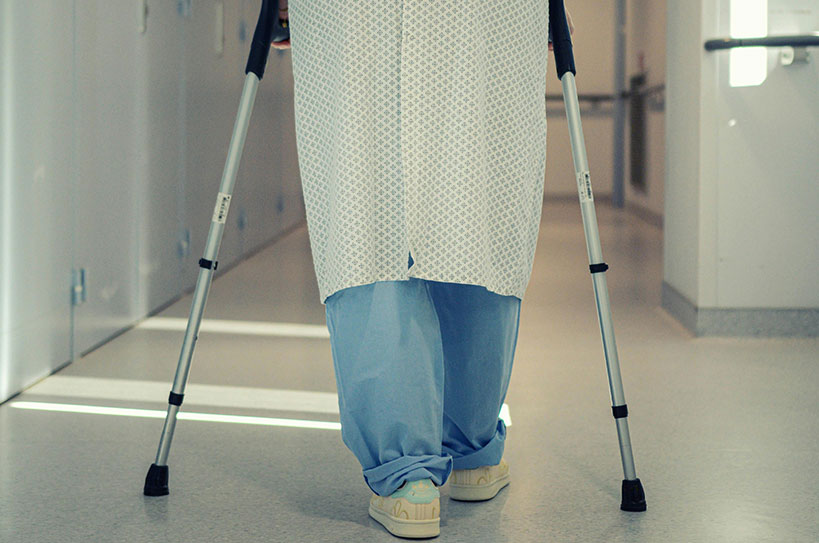When you are seeking compensation for an injury caused by negligence and are unsuccessful in negotiating an acceptable insurance settlement, you can file a personal injury case in court. In the filing documents, the parties will be named plaintiff and defendant. But who are plaintiffs and defendants in a personal injury case?
We answer this and more in this blog. If you need help identifying your position in a personal injury case and exercising your rights, our attorneys at Terry Bryant Accident & Injury Law can help you. We will carefully listen to your case facts and provide guidance based on your unique situation. Call us now at (713) 973-8888 for a free and confidential case review.
Why You Should Let Us Represent You
At Terry Bryant Accident & Injury Law, we are committed to providing our clients with excellent representation and working hard to secure the best possible outcome. We know what is required to file a lawsuit, present it in court, and argue in your favor. This knowledge comes from our over 40 years of experience. Judge Bryant is also Board Certified in personal injury trial law by the Texas Board of Legal Specialization.
We have secured settlements and verdicts totaling more than one billion dollars, and we continue to strive for maximum compensation for our clients. We work on a contingency fee basis, so you don’t have to worry about paying us unless and until you win. Contact us to learn more about our services and how we can help you.
We take a personalized approach to every case and provide resources to each one as required.
Who Are Plaintiffs and Defendants in a Personal Injury Case?
Again, personal injury case parties are known as plaintiffs and defendants. Below, we explain what this means and provide examples to help you understand better.
Plaintiffs
A plaintiff is the person or entity who initiates a lawsuit. In a personal injury case, the plaintiff is the one who suffered an injury because of a negligent action. The plaintiff will file a document with the court which is known as a complaint, outlining the reasons for the lawsuit. The complaint will also contain the facts of the case and the legal grounds on which the plaintiff is seeking compensation.
The type of personal injury claim determines who the plaintiff will be. The following are some examples:
- Automobile Cases: The plaintiff will be a driver or passenger who suffered injuries from a car accident. The plaintiff can also be a pedestrian, a cyclist, or a motorcycle rider that was struck.
- Medical Malpractice: The plaintiff will be a patient who suffered an injury due to the mistake or error made by a medical professional.
- Product Liability: The plaintiff will be a person who used a product that malfunctioned, leading to an injury. Product liability plaintiffs can also arise from a car accident if a defective part led to a collision.
- Premises Liability: The plaintiff in a premises liability case is the person who entered a property as a legal visitor and sustained injuries due to a hazardous condition that the owner knew of and failed to remove.
In wrongful death claims, the legal beneficiaries or estate executor or administrator who can file a lawsuit under Texas law will be the plaintiff. Ultimately, a plaintiff is someone who has been wronged and wants to seek redress in court.
Defendants
A defendant is the person getting sued by the plaintiff. In personal injury cases, the defendant is typically the person whose negligent actions led to the plaintiff’s injury. After the plaintiff files a complaint, the defendant will file an answer, responding to the allegations made by the plaintiff.
The type of personal injury case determines who the defendant will be. The following are some examples:
- Automobile Accidents: The defendant is the driver whose action caused the accident. It could also be an entity or a company, like the party responsible for maintaining safe road conditions or a trucking company which negligently hired a driver with a bad record.
- Medical Malpractice: Defendants in medical malpractice cases can be doctors, nurses, hospital management, or lab technicians. The defendant could also be a medical device manufacturer. In most cases, two or more of these parties are listed as defendants, depending on the case facts.
- Product Liability: The defendant is the company who manufactured the product. It could also be the person or business who sold the product if they knew of the defect or dangerous side effects and failed to warn the plaintiff.
- Premises Liability: Defendants in a premises liability case are property owners who fail to keep their premises safe. Building and store managers can also be added as defendants depending on the case’s facts.
When filing a lawsuit, it is vital to name all the parties involved in the negligent actions that caused your injuries as defendants. This ensures you get all the compensation you are entitled to and all responsible parties are held accountable.
Defendants defend themselves against the plaintiff claim by arguing they were not at fault or that the plaintiff’s injuries were not as severe as claimed, but they must support such arguments with evidence.
Other Personal Injury Case Parties
Aside from direct defendants, there are other classes of parties that can be added to a personal injury case. They include the following:
- Third-Parties (Impleaders): These are those the defendant brings into the lawsuit to shift some or all of the blame for the plaintiff’s injury.
- Joinder: This refers to a party who joins a lawsuit as a plaintiff because they believe they have the right to damages sought as they were involved in the same incident and suffered an injury.
- Interpleader: An interpleader is a party alleging they have a claim arising from the same injury event.
- Intervention: These are parties who have a statutory right to enter a lawsuit.
Of the above listed parties, third-party defendants are the most common in personal injury lawsuits.
Steps Involved in a Personal Injury Lawsuit
The following are the steps involved in a personal injury lawsuit:
Initial Consultation
During the initial consultation, you will discuss the details of your case with your attorney. The topics covered will include how the injury occurred, the extent of your injuries, the evidence available, and the damages sought.
Filing the Lawsuit
If you have a valid case, your lawyer will file a lawsuit on your behalf. The complaint typically filed as Plaintiff’s Original Petition, will outline your claims against the defendant and the legal basis for them. After the filing, the defendant will be served with a copy.
Answer
The defendant will respond to the complaint by filing an answer. The answer contains any admittance or denial by the defendant and their statement of defense.
Discovery and Motion
During the discovery phase, the plaintiff and defendant will exchange and gather information. Discovery generally includes:
- Interrogatories: Written questions that must be answered under oath
- Depositions: Oral questions answered under oath, typically in the presence of attorneys from both sides
- Requests for Production: Requests for documents, records, and other evidence.
Once the discovery phase ends, the parties will file motions to resolve any issues they have. The motion can also be about entering summary judgment or throwing out the case for lack of legal grounds.
Settlement Negotiations
The court will order both parties to explore settlement before the case goes to trial. If both parties agree to settle, they will submit the amount agreed on and the settlement terms to the court, which becomes the judgment. As a result of reaching a settlement, the case will not go to trial.
Personal injury lawsuits can be a lengthy process that could take years to resolve, which is why most plaintiffs prefer to settle, rather than waiting years.
Trial
If the plaintiff and defendant refuse to settle, the case goes to trial. A trial involves:
- Jury selection, including voir dire
- Opening statements
- Witness testimony and cross-examination
- Closing arguments
- Jury deliberation and verdict.
If you win the case, you will collect the judgment and the defendant will pay the awarded amount.
What Should You Do if Injured by Another Person’s Negligence?
If you suffered injuries because of another person’s negligence, it is essential to take steps that will help maximize your compensation. Start by seeking medical attention, as your health should always be a priority. Then document the incident and report it to the relevant authorities.
Afterward, consult our personal injury lawyers. We will help you handle the process, from filing the complaint to advocating for you during the trial. We will be with you every step of the way and fight to ensure your case has a positive outcome.
Were You Injured By Someone’s Negligence? Book a Free Consultation With Us Now!
If you or a loved one was injured by someone’s negligence, our personal injury lawyers at Terry Bryant Accident & Injury Law will help you seek compensation. We have a successful track record and will help you recover economic and non-economic damages. Contact us now at (713) 973-8888 or toll-free 1 (800) 444-5000 for a free and confidential initial consultation.
Attorney Terry Bryant
 Terry Bryant is Board Certified in personal injury trial law, which means his extensive knowledge of the law has been recognized by the Texas Board of Legal Specialization, setting him apart from many other injury attorneys. The 22 years he spent as a Municipal Judge, Spring Valley Village, TX also provides him keen insight into the Texas court system. That experience also helps shape his perspective on personal injury cases and how they might resolve. This unique insight benefits his clients. [ Attorney Bio ]
Terry Bryant is Board Certified in personal injury trial law, which means his extensive knowledge of the law has been recognized by the Texas Board of Legal Specialization, setting him apart from many other injury attorneys. The 22 years he spent as a Municipal Judge, Spring Valley Village, TX also provides him keen insight into the Texas court system. That experience also helps shape his perspective on personal injury cases and how they might resolve. This unique insight benefits his clients. [ Attorney Bio ]


 Terry Bryant is Board Certified in personal injury trial law, which means his extensive knowledge of the law has been recognized by the Texas Board of Legal Specialization, setting him apart from many other injury attorneys. The 22 years he spent as a Municipal Judge, Spring Valley Village, TX also provides him keen insight into the Texas court system. That experience also helps shape his perspective on personal injury cases and how they might resolve. This unique insight benefits his clients. [
Terry Bryant is Board Certified in personal injury trial law, which means his extensive knowledge of the law has been recognized by the Texas Board of Legal Specialization, setting him apart from many other injury attorneys. The 22 years he spent as a Municipal Judge, Spring Valley Village, TX also provides him keen insight into the Texas court system. That experience also helps shape his perspective on personal injury cases and how they might resolve. This unique insight benefits his clients. [ 

